Oscar Tusquets: My decade of friendship with Salvador Dali
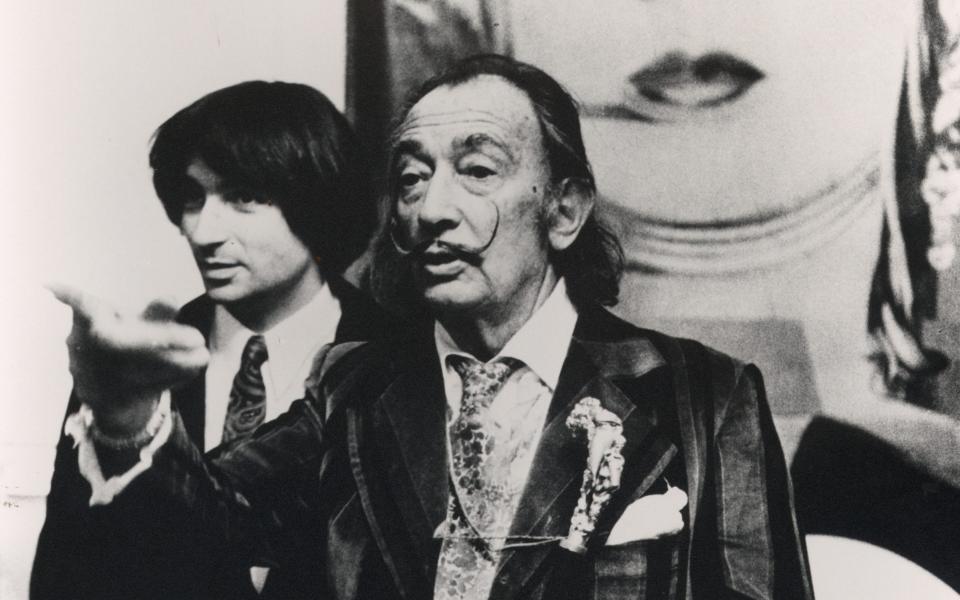
Oscar Tusquets Blanca is liberal with olive oil. We’re having lunch at his house in Barcelona, and as he pours it onto his sea bass, it catches the light. The architect, who works mostly on larger-scale urban and cultural projects across Europe, also designs private homes such as this one, a modern construction with a neo-classical twist. Behind Tusquets hang a watercolour with a simple sketch by Dalí, a life-sized drawing of an ant dedicated to Oscar in the surrealist’s scrawl and a photoshop collage with a superimposed image of Dalí floating through the air.
Tusquets, 24, was introduced to Salvador Dalí then aged 64 at a party in Cadaqués in 1968. “He arrived at the party quite early on, when it was still formal,” Tusquets says, “but these parties quickly descended into mayhem. Federico Correa [the host] would do stripteases, among other things.” Tusquets was a slim young man with dark hair and olive skin, from a well-to-do Catalan family, and belonged to the crowd of liberal young creatives known as the Gauche Divine. The young architect had just started his career that summer. “Dalí said, ‘Oh, I’m very interested in your work!’” he recalls, “I had only designed one house in Cadaques.” The two met at that very Mediterranean resort in the North of Spain, where Tusquets’ work had caught the artist’s attention.
The next day, Tusquets took up the artist’s invitation to visit his home in Port Lligat, in the Costa Brava, and thus began a decade of friendship between the two Catalans. Before long, Tusquets began working with Dalí. In 1978, they published a book together, the first Spanish edition of The Tragic Myth of Millet’s Angelus, a surrealist text Dalí had written in the 1930s, and soon the young architect proposed the Mae West room. “He had painted a magnificent painting which is Mae West’s face, used as a surrealist apartment over the cover of a magazine. The eyes are a view of Paris, the nose is a fireplace, and the lips are a sofa, and the hair is curtains. I was familiar with the painting and I said, ‘Listen, Salvador, why don’t we make a space that can be seen from a point of view, and that reproduces a painting which reproduces a space?” Tusquets explains.
Dalí loved the idea, and trusted Tusquets, encouraging him to take initiative with prospective studies and models and adding a signature touch to these in his own time. “To represent the lips, we made this model,” Tusquets says, turning to a shelf and bringing down a bright red sculpture the size of a handbag. Dali’s signature is bright as ever, a painted drop of blood glistening on the lips’ edge. Although they tried selling the couch commercially, the plastic which they’d rendered it in aged badly, and they discontinued production early on.
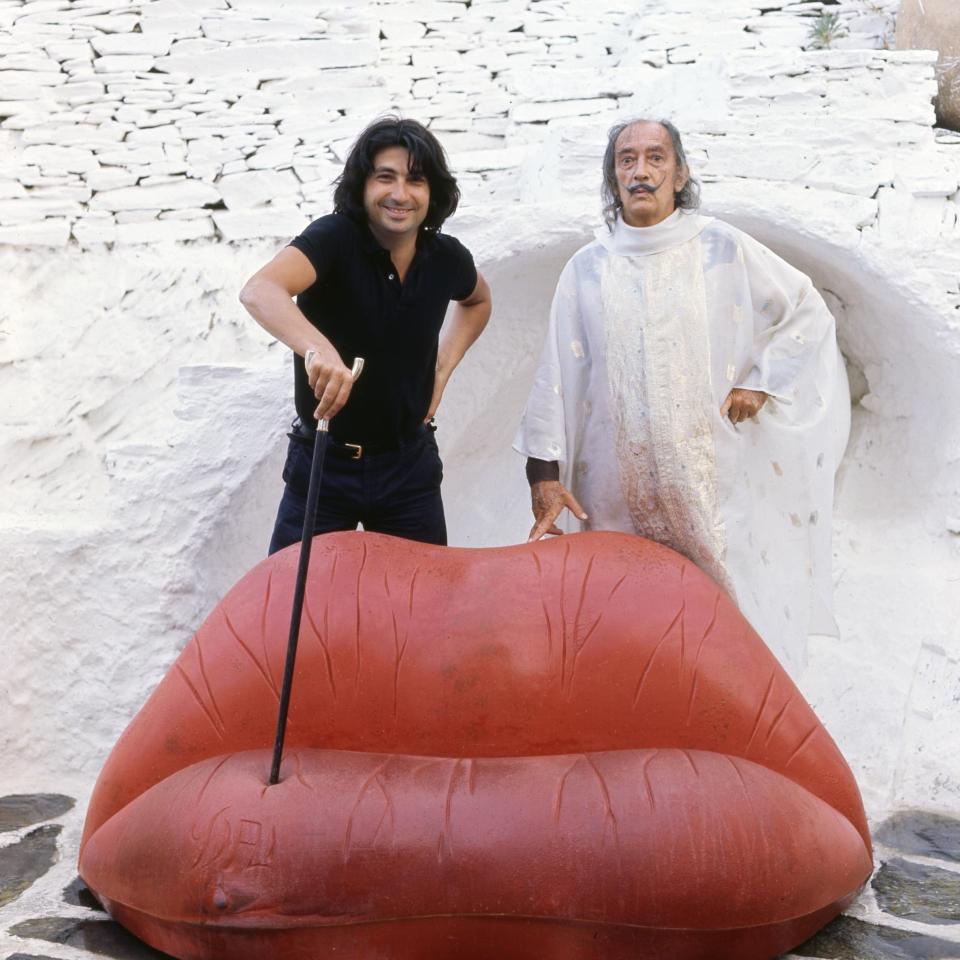
Despite being in his 60s when he met Tusquets, Dalí was tireless. “He would nap for five minutes, with a spoon in his hand and when he fell asleep, the spoon would fall, waking him up,” Tusquets recounts, “he would say, ‘That’s when I have my most wonderful ideas, when I doze!’” Tusquets remembers Dalí in a leopard print fleece. The artist would talk fondly of a pet rabbit he’d rescued with his wife, Gala, from a forest fire. In a trembling voice he’d recount the day, before their departure to Paris, when he and Gala had eaten the bunny to avoid leaving it in the care of the household staff.
Dali and Tusquets were often together in Paris and New York, where the celebrated surrealist had more time for leisure. He stayed in the suite at Le Meurice in Paris where the head of the Gestapo had lived during WWII. At five pm, he would fling open its doors: “Drag queens, flamenco artists, the minister of culture, editors, artists, champagne and beautiful people came,” says Tusquets. “He was very generous. He always paid for everything," recalls Tusquets.
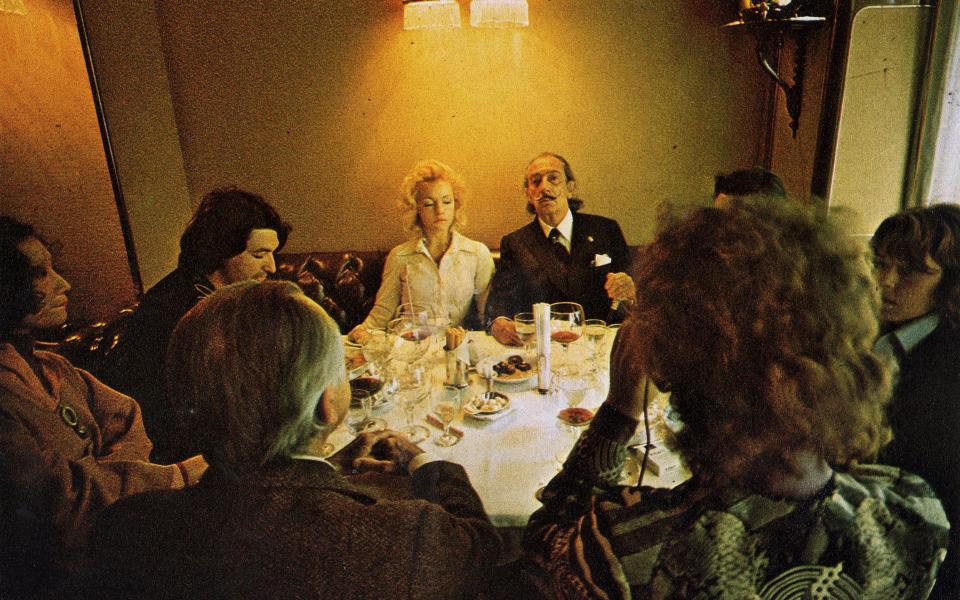
The young architect would accompany Dalí to Maison Deyrolle, a taxidermist which fascinated the artist. “He bought a lion, which is in his house, and a bear, and they sent them to the hotel. Gala had to pay for them and there was no end to her complaining!” Tusquets chuckles.
“At around seven pm, Dalí would say in French, ‘Let’s have dinner, and why don’t you, you, you, you and you come,’” Tusquets remembers, pointing around him as he speaks. Though Tusquets was always invited, along with the most beautiful people in the room, others (such as the minister of culture) weren’t so lucky.
“We would only go to Maxim’s or Laserre,” says Tusquets. The latter was favoured by many for it’s ceiling, which opened to the night sky. “But Dalí would say, ‘Let’s go to Laserre, but tell them not to open the ceiling,’” Tusquets says, laughing at his friend’s quixotic behaviour.
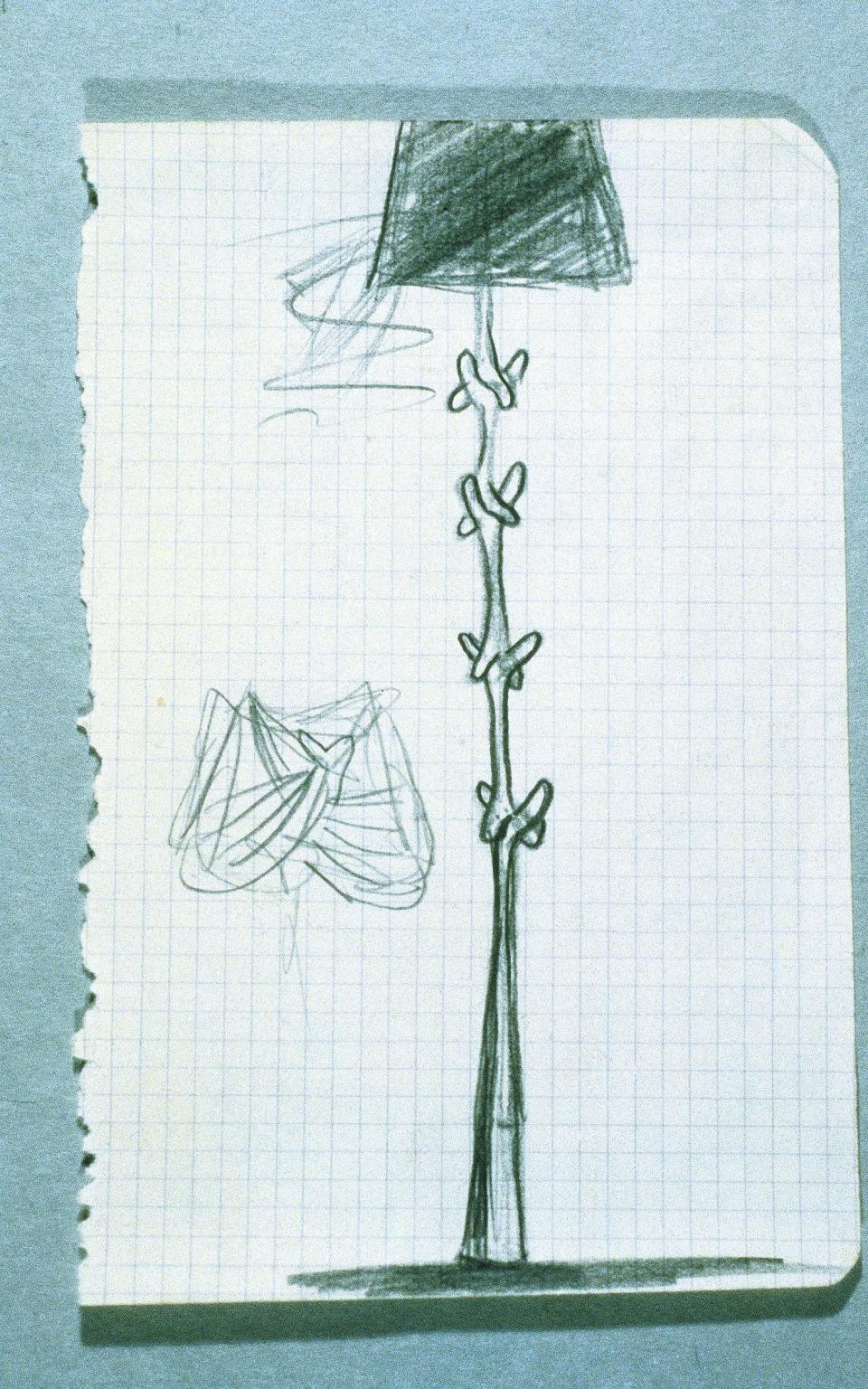
“When he was in New York, staying at the Saint Regis, every Sunday he would do a dinner for paupers and artists. It was Warhol, and his crowd, and poor people he would see in the streets and who caught his interest,” tells Tusquets, who would spend his Easter holidays visiting Dalí in the Big Apple.
“He liked me because I was young and because we could talk about the same things,” says Tusquets, “such as Clockwork Orange, for example, which had just come out, or [the Baroque architect, Francesco] Borromini.”
On one occasion, Dalí asked Tusquets to accompany him on business “‘Let’s go to my gallery, I have to put a price on my pieces for the insurance,’” Tusquets recalls his friend saying. “They started bringing out some of Salvador’s landmark works, and they’d ask him ‘How much should we value this one at?’ And he says, ‘5,000.’ They were shocked. ‘5,000? $5,000? Mr Dalí, $5,000!’ He answered, ‘Well no, 50,000. 500,000!’” Tusquets laughs.
“Dalí never had any money on him,” he recalls, “in his first exhibit in New York, which was a huge success, he and Nelson Rockefeller got a taxi to the Plaza Hotel, and when they got there, they realised that neither of them had any money. The doorman had to pay!”
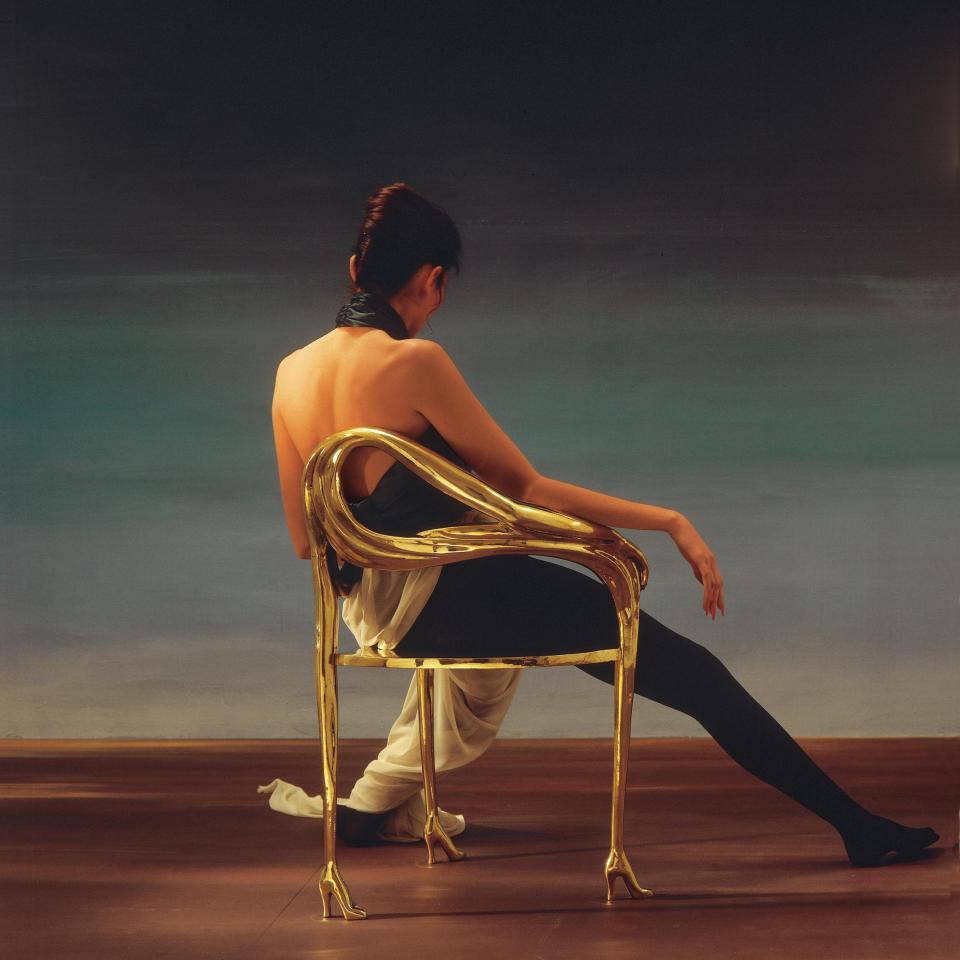
Beyond painting, Dalí wrote, sketched, and designed everything from Lanvin chocolate advertisements to furniture. It was thanks to his familiarity with the artist’s avant-garde spirit, and using his sketches, that Tusquets began to realise some of Dalí’s designs after his death in 1989. Dalí’s touch is instantly recognisable in the Port Lligat sunbed, which the artist designed in 1962, the vise-a-vise de Gala (1935-1937), an armchair designed for two people to converse in, and the three lamps from the same period which Tusquets oversaw the creation of.
Dali’s death, and the months leading up to it, were a difficult time for Tusquets, who struggled to see the artist in his weakened state. After his death, and in memory of his friend, Tusquets decided to bring to life some of the elements of Dalí’s paintings. With the slender chair pictured in Femme à tête de roses (1935), and the armchair embossed by the weight of an invisible person from Singularities, Tusquets began making the surreal real.
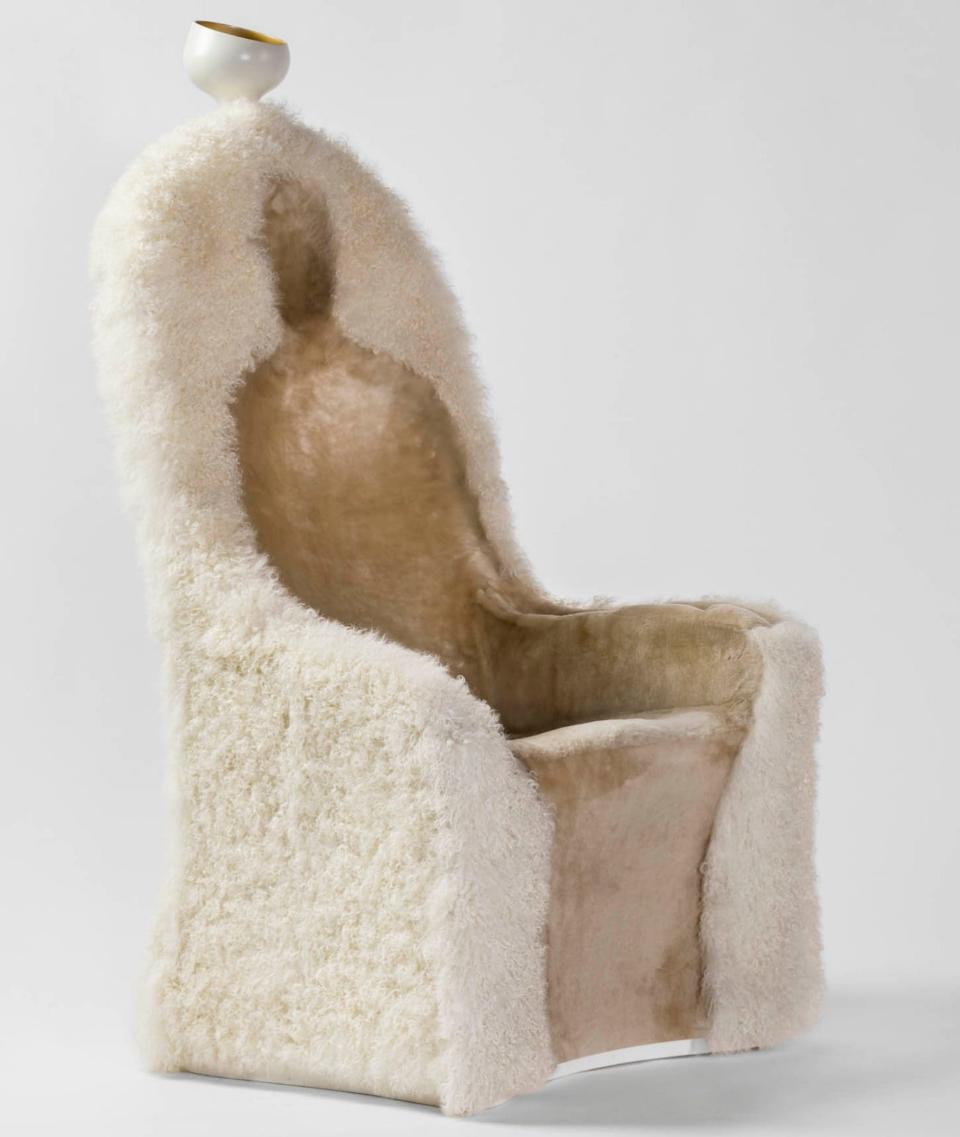
“There’s a collage by Dalí where there’s a little lamb that is a bed-table,” says Tusquets. To source the sheep necessary to realise this image, Interpretation Project for a Stable-library (1942), Tusquets returned to Maison Deyrolle in 1992. Here he purchased a dozen taxidermy sheep and turned them into limited-edition night-tables. Of the twelve works, each costing €40,000, only three remain unsold.
Tusquets began this project in 1992, shortly after Dalí's death. He executed it with BD, a furniture design company of which Tusquets is a founder. “Dalí always said, ‘The best thing about me are my ideas. The worst is making them a reality.’” Tusquets says. In an effort to pay homage to Dalí, Tusquets set about making his friend’s ideas a reality.
All of Dalí’s original designs, as well as those executed by Tusquets, are available for purchase from BD, online through 1stDibs, and are available for purchase from Homeart in Hong Kong. as well as DDC in New York and Los Angeles.
Sign up for the Telegraph Luxury newsletter for your weekly dose of exquisite taste and expert opinion.
